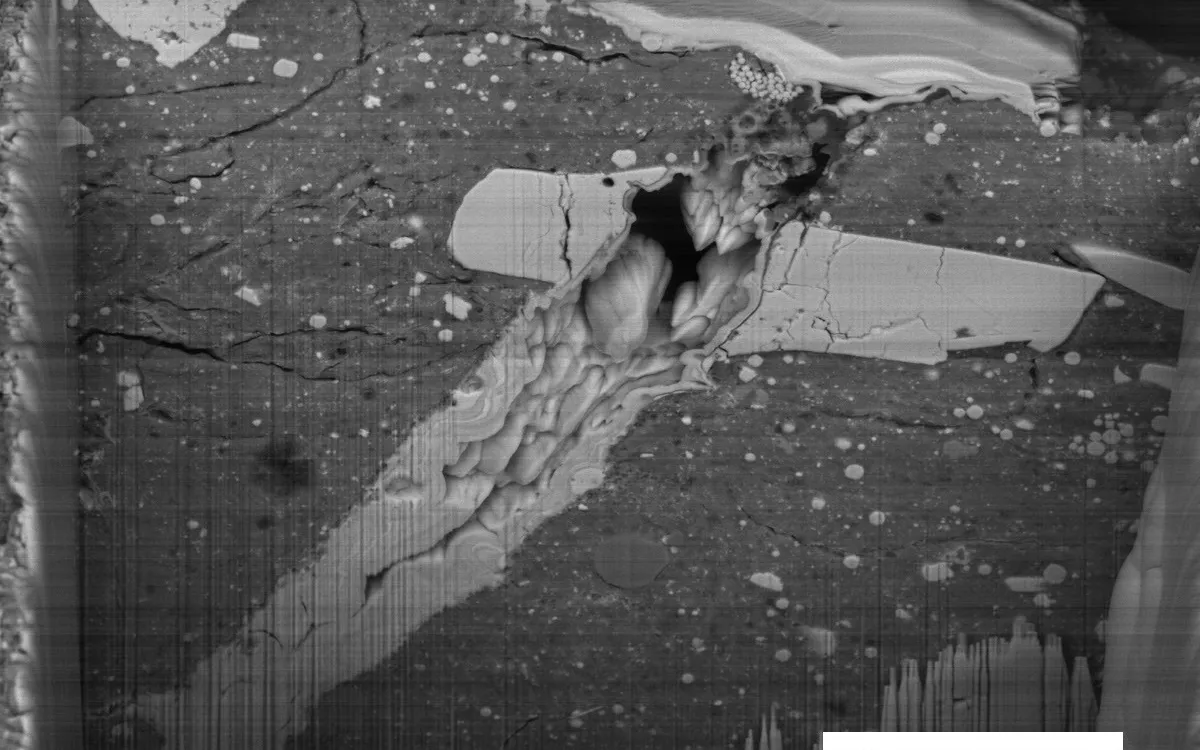
Asteroid Bennu, which was sampled by NASA's OSIRIS-REx mission in 2020, has revealed intriguing insights about its composition and formation. The asteroid is a fascinating blend of dust that originated in our solar system, alongside organic matter from interstellar space and ancient stardust from before the solar system existed. Recent studies published by scientists at NASA and various institutions illustrate how these unique materials were altered over time through interactions with water and exposure to the harsh conditions of space.
Bennu consists of fragments from a larger parent asteroid that was obliterated due to a collision within the asteroid belt, located between the orbits of Mars and Jupiter. A significant paper, co-led by Jessica Barnes from the University of Arizona, Tucson, and Ann Nguyen from NASA’s Johnson Space Center, was published in the journal Nature Astronomy. This research indicates that Bennu’s ancestor was composed of materials with diverse origins—ranging from close to the Sun to the outer reaches of the solar system. Remarkably, some of these materials withstood extreme chemical processes driven by heat and water, surviving the energetic collision that ultimately fragmented the parent asteroid.
Nguyen commented, “We traced the origins of these initial materials accumulated by Bennu’s ancestor. We found stardust grains with compositions that predate the solar system, organic matter likely formed in interstellar space, and high-temperature minerals that formed closer to the Sun. All of these constituents were transported great distances to the region where Bennu’s parent asteroid formed.”
The chemical and atomic similarities observed in samples from Bennu, the asteroid Ryugu (sampled by JAXA’s Hayabusa2 mission), and the most primitive meteorites collected on Earth suggest that their parent asteroids may have originated from a shared, distant region of the early solar system. However, the differences noted in the Bennu samples could imply that this region underwent changes over time or did not mix as thoroughly as previously assumed.
While some of the original constituents of Bennu survived, most of its materials experienced significant transformation due to reactions with water. This finding is highlighted in another paper co-led by Tom Zega of the University of Arizona and Tim McCoy from the Smithsonian’s National Museum of Natural History, published in Nature Geoscience. According to Zega, “Bennu’s parent asteroid accumulated ice and dust. Eventually that ice melted, and the resulting liquid reacted with the dust to form what we see today, a sample that is 80% minerals containing water.”
This transformation process suggests that the parent asteroid collected substantial icy material from the outer solar system, requiring only a bit of heat to melt the ice and catalyze reactions with the solid materials.
The transformation of Bennu did not stop there. In a third study, co-led by Lindsay Keller at NASA Johnson and Michelle Thompson from Purdue University, also published in Nature Geoscience, researchers discovered microscopic craters and small splashes of once-molten rock, known as impact melts, on the surfaces of the samples. These features indicate that Bennu has been bombarded by micrometeorites, with these impacts, along with solar wind effects, contributing to what is known as space weathering. Given that Bennu lacks an atmosphere, it is particularly vulnerable to such weathering processes.
Keller noted, “The surface weathering at Bennu is happening much faster than conventional wisdom would suggest, and the impact melt mechanism seems to dominate, contrary to our initial assumptions.” This understanding is vital for interpreting the properties that govern space weathering and can be applied to other asteroids that have not yet been visited by spacecraft.
Asteroids like Bennu serve as remnants from planetary formation that occurred approximately 4.5 billion years ago, offering a glimpse into the solar system's history. However, as Zega pointed out, some of these remnants differ from meteorites found on Earth. This discrepancy arises because certain asteroids disintegrate in the atmosphere and do not reach the ground, underscoring the significance of collecting actual samples.
Barnes emphasized the importance of these samples, stating, “The samples are crucial for this work. We could only arrive at these conclusions because of the samples. It's incredibly exciting that we can finally glean insights about an asteroid we've long dreamed of visiting.”
The next samples anticipated to unravel the story of our solar system will come from Moon rocks returned by astronauts during the upcoming Artemis III mission. NASA’s Goddard Space Flight Center managed overall mission operations, systems engineering, and safety assurances for the OSIRIS-REx mission. Dante Lauretta of the University of Arizona served as the principal investigator, leading the science team and overseeing the mission's scientific observation planning and data processing.
Lockheed Martin Space in Littleton, Colorado, constructed the spacecraft and managed flight operations, while navigation was a collaborative effort between Goddard and KinetX Aerospace. Sample curation for OSIRIS-REx is conducted at NASA’s Johnson Space Center in Houston. This mission also features international collaborations, including the OSIRIS-REx Laser Altimeter instrument from the Canadian Space Agency and scientific partnerships with JAXA’s Hayabusa2 mission.
OSIRIS-REx is the third mission in NASA's New Frontiers Program, managed by NASA's Marshall Space Flight Center in Huntsville, Alabama, as part of the agency's Science Mission Directorate in Washington.
For more information on NASA’s OSIRIS-REx mission, visit: https://science.nasa.gov/mission/osiris-rex/
Contact: Melissa Gaskill, Johnson Space Center
For further inquiries, reach out to Karen Fox at 202-358-1600 or via email at karen.c.fox@nasa.gov, or Molly Wasser at molly.l.wasser@nasa.gov.